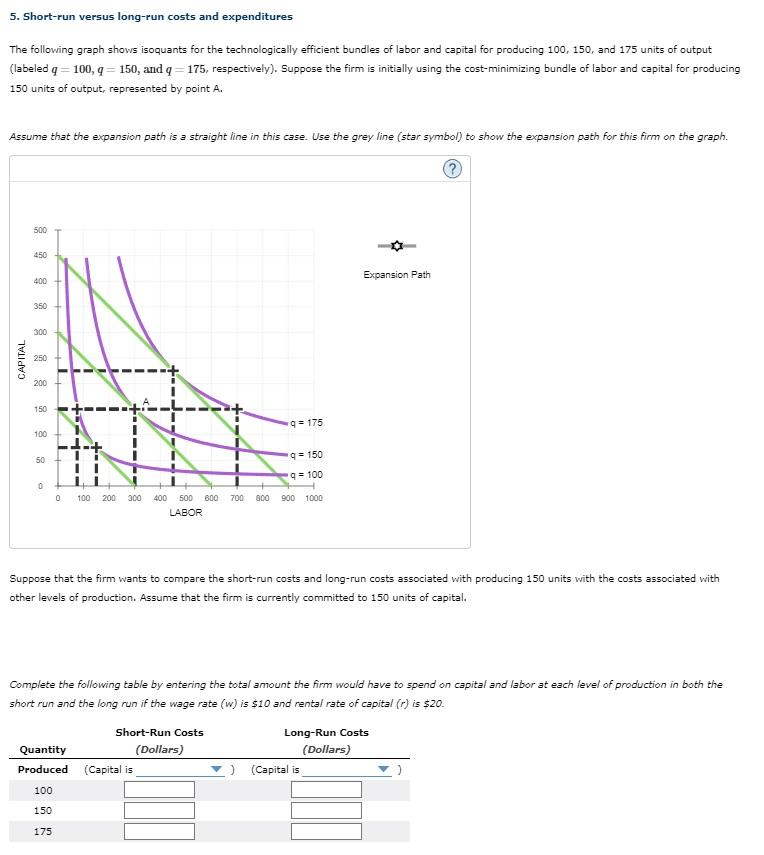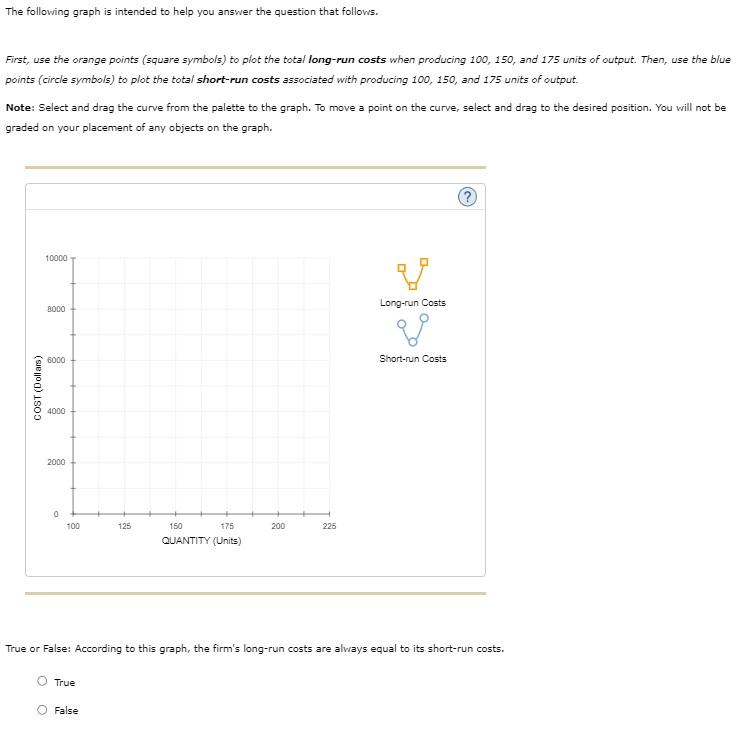Home /
Expert Answers /
Economics /
5-short-run-versus-long-run-costs-and-expenditures-the-following-graph-shows-isoquants-for-the-te-pa907
(Solved): 5. Short-run versus long-run costs and expenditures The following graph shows isoquants for the te ...
5. Short-run versus long-run costs and expenditures The following graph shows isoquants for the technologically efficient bundles of labor and capital for producing 100, 150, and 175 units of output (labeled \( q=100, q=150 \), and \( q=175 \), respectively). Suppose the firm is initially using the cost-minimizing bundle of labor and capital for producing 150 units of output, represented by point A. Assume that the expansion path is a straight line in this case. Use the grey line (star symbol) to show the expansion path for this firm on the graph. Suppose that the firm wants to compare the short-run costs and long-run costs associated with producing 150 units with the costs associated with other levels of production. Assume that the firm is currently committed to 150 units of capital. Complete the following table by entering the total amount the firm would have to spend on capital and labor at each level of production in both the short run and the long run if the wage rate \( (w) \) is \( \$ 10 \) and rental rate of capital \( (r) \) is \( \$ 20 \).
The following graph is intended to help you answer the question that follows. First, use the orange points (square symbols) to plot the total long-run costs when producing 100, 150, and 175 units of output. Then, use the blue points (circle symbols) to plot the total short-run costs associated with producing 100, 150, and 175 units of output. Note: Select and drag the curve from the palette to the graph. To move a point on the curve, select and drag to the desired position. You will not be graded on your placement of any objects on the graph. True or False: According to this graph, the firm's long-run costs are always equal to its short-run costs. True False
Expert Answer
All expansion lines are min. combinations of costs at different levels of output in the long run

